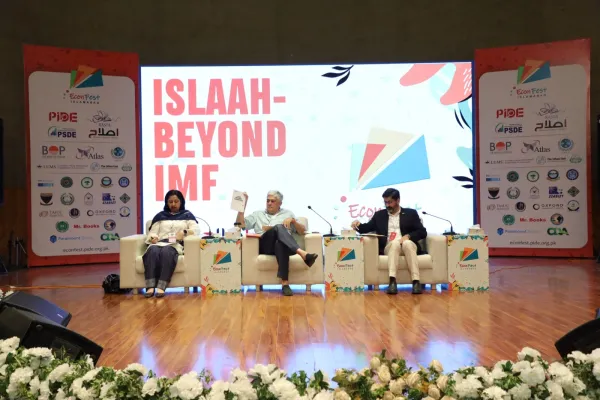i ECONOMY
The government of Sindh will contribute Rs50 billion to 'Flood Response Emergency Housing Project', which is mainly funded by global lending institutions. The total cost of the project is Rs296 billion, of which the World Bank loan financing would be $500 million, equivalent to Rs140 billion. Islamic Development Bank via Islamic financing arrangements will provide $200 million, which is equivalent to Rs56 billion, the official documents of the project showed. The project aims to support the flood-hit people in all the districts of Sindh in the reconstruction and repair of their houses. According to the post-disaster needs assessment, almost 1.7 million houses in Sindh were either partially damaged or fully destroyed in the 2022 floods. As a result, millions of families are living in temporary shelters. The project will build or repair 350,000 sustainable, multi-hazard resilient houses in selected areas hit by the floods. Housing subsidy grants will be provided to allow for beneficiary-driven construction that meets standards of enhanced resilience and reflects local preferences and available materials.
Houses will be constructed to include basic rainwater harvesting systems and latrines to improve water, sanitation and hygiene. Households that lack access to documents proving identity or property ownership, including members of women-headed households, will be supported by technical assistance to prove their ownership and eligibility for reconstruction and restoration grants. Safeguards will be established to ensure that houses of vulnerable groups – especially women-headed households, single women, the elderly and persons with disabilities – are prioritised for reconstruction. Depending on their needs, beneficiaries will also receive construction support or be trained in financial management and supervision to ensure that their houses are completed on time, within budget and to the required standards of resilience, quality and sustainability.
Sindh has a population of 50.4 million, nearly half of which lives in rural areas, and about 37% of the rural population lives below the poverty line. The province is particularly vulnerable to natural disasters due to its geographical location, socioeconomic vulnerability, and climatic conditions. According to pre-floods housing census data, more than 2.7 million houses in Sindh’s rural areas were ‘katcha houses’, which are made of mud and don’t meet engineering standards for resilience, while 5.6 million housing units are ‘pakka’ or made of brick. A portion of Sindh’s housing stock is also located in areas that are prone to recurrent hazards, such as flood plains.
Credit: Independent News Pakistan (INP)









